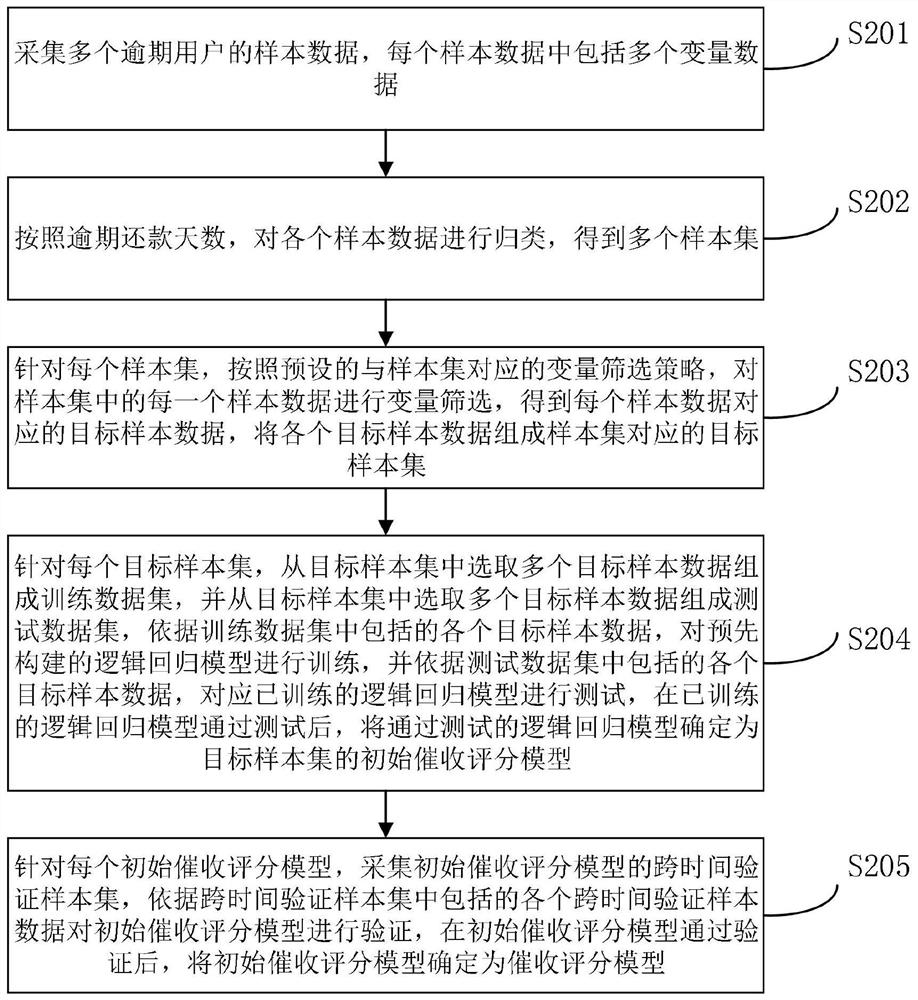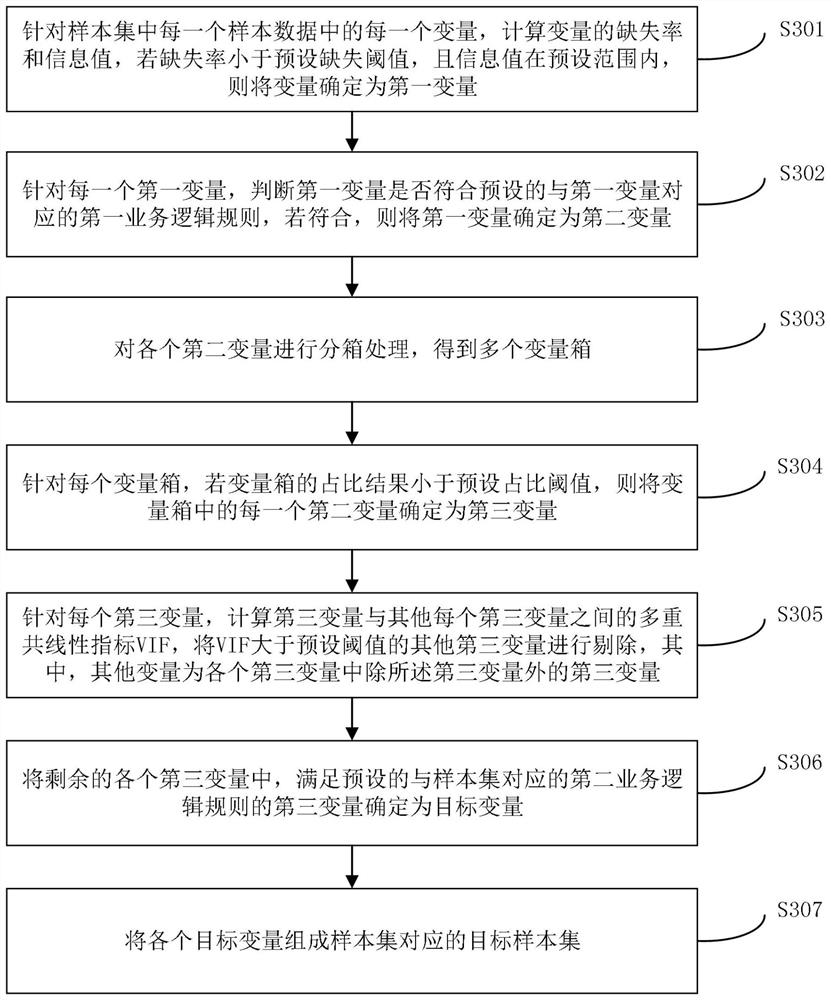Collection scoring method and device
A model and target technology, applied in the field of collection scoring methods and devices, can solve the problems of inapplicability of collection strategies, affecting the accuracy of collection scoring, and inability to achieve accurate collection, and achieve the effect of precise collection and improvement of accuracy.
- Summary
- Abstract
- Description
- Claims
- Application Information
AI Technical Summary
Problems solved by technology
Method used
Image
Examples
Embodiment Construction
[0069] The following will clearly and completely describe the technical solutions in the embodiments of the application with reference to the drawings in the embodiments of the application. Apparently, the described embodiments are only some of the embodiments of the application, not all of them. Based on the embodiments in this application, all other embodiments obtained by persons of ordinary skill in the art without making creative efforts belong to the scope of protection of this application.
[0070] The application is applicable to numerous general purpose or special purpose computing device environments or configurations. For example: personal computer, server computer, handheld or portable device, tablet type device, multiprocessor device, distributed computing environment including any of the above devices or devices, etc.
[0071] The embodiment of the present application provides a collection scoring method, which can be applied to various system platforms, and its ...
PUM
 Login to View More
Login to View More Abstract
Description
Claims
Application Information
 Login to View More
Login to View More - R&D
- Intellectual Property
- Life Sciences
- Materials
- Tech Scout
- Unparalleled Data Quality
- Higher Quality Content
- 60% Fewer Hallucinations
Browse by: Latest US Patents, China's latest patents, Technical Efficacy Thesaurus, Application Domain, Technology Topic, Popular Technical Reports.
© 2025 PatSnap. All rights reserved.Legal|Privacy policy|Modern Slavery Act Transparency Statement|Sitemap|About US| Contact US: help@patsnap.com



